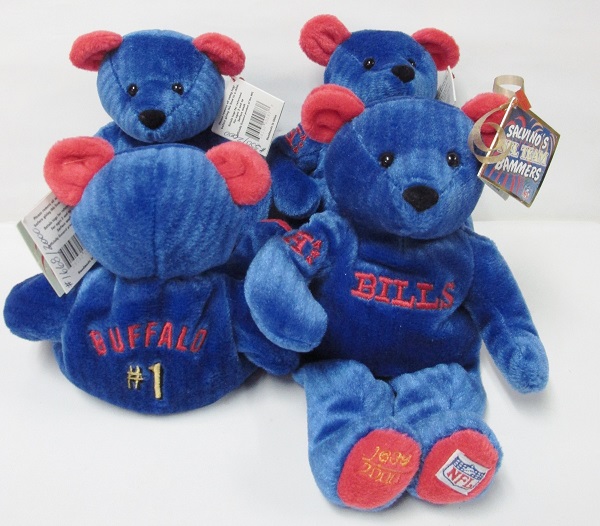Search Box
Categories - Click on a Category to Display All Items in that Category
Annalee Dolls
Artist Bears
AVON™ Products->
Betty Boop™
Blue Sky™
Books/Magazines
Boyds Collection, LTD™->
Bunnies by the Bay
Candles
Charming Tails™->
Classic Collecticritters™
Coca-Cola™ Collectibles
Collector's Corner->
Collegiate 'PICS'->
Country Artists™->
Deb Canham->
Display Units->
Dolls/Accessories->
Enesco™->
Faerie Glen™
Fairies
Fenton Art Glass™->
2007 Dated Exclusives
Angels
Animals
Aquatic/Marine Life
Baskets
Beach Babies
Beads
Bears
Bells
Birds->
Birthstone Bears
Books
Bottles
Bowls/Punch Bowls/Sugar&Creamers
Boxes/Ring Holders/Trinkets
Bunnies
Butterflys
Cake Plate
Calendar Cats
Candle Holders/Votives
Candy Box
Carnival Glass
Cats->
Childrens Collection
Christmas->
Christmas 2011 Collection
Comports
Connoisseur Collection
Cream & Sugar
Crown Votives
Dave Fetty Collection
Dogs
Dolls
Dresser Sets
Easter/Spring
Egg Cups
Eggs
Epergne
Ewers
Fairy Lights
Father's Day
Fenton Logos
Figurines
Floral-N-Flight on Orange Slice
Flower Power
Frank Workman Collection
Frogs
GALA Exclusive
Glasses/Cups/Tumblers
Halloween
Hats
Hobnail
Honor Collection
Horizons Collection
Horses/Foals
Into the Pond
Irish Treasures
It's a Colorful Life Collection
Jars
Jewelry
Kelsey Murphy/Robert Bomkamp
Lamps
Limited Editions
Mary Gregory
Mice
Mother's Day
Natural Animals Collection
Oil (Effusion) Lamps
Paperweights
Paradise Collection
Perfume Bottles
Pitchers
PJ Babies
Plates
Pond Buddies
Purses
Relish Tray
Rose Bowls
Salt & Pepper Set
Showcase Dealer Exclusives
Slippers/Shoes/Boots
Studio Collection
Temple Jars
Thanksgiving/Autumn
Toothpick Holder
Turtles
Valentines
Vases
Fenton© Artware
Firemen
Fitz & Floyd®->
Furniture/Musical Instruments
GANZ®->
Gifts a'la Mode Exclusives->
Glass - Other
Glass Eye Studio®->
Global Village®
Goebel™->
Hagen-Renaker, Inc.®->
Hallmark™->
Health & Beauty->
Highland Mint
Holiday/Special Occasion->
Home Decor/Wall Art->
Housewares->
I Love Lucy®
Inspirational/Faith Based->
Irish Dresden
Jewelry
Josef Originals
Katherine's Collection™->
Knives
Lighting
Limerick Bears™
Limited Treasures™
Mermaids
Mikasa
Miniature Glass Figurines
Miniatures
Model Cars/Trucks/Motorcycles->
NASCAR
NFL
Nurse
P Buckley Moss®
Paperweights
Perfume Bottles
Plush Bears
Pocket Dragons™
Pure Grace®->
Russ Berrie®
Sally Winey Bears
Salvino's™->
Santas
Scents & Accents->
Schmid®
Shoes & Clothing->
Sports Memorabilia/Fan Wear->
Steiff Bears
Teacher
TY®->
Vintage Clothing->
Vintage Porcelain
Wallace Berrie
Walt Disney Company®->
Watches
Wind Chimes->
Windstone Editions®->
Artist Bears
AVON™ Products->
Betty Boop™
Blue Sky™
Books/Magazines
Boyds Collection, LTD™->
Bunnies by the Bay
Candles
Charming Tails™->
Classic Collecticritters™
Coca-Cola™ Collectibles
Collector's Corner->
Collegiate 'PICS'->
Country Artists™->
Deb Canham->
Display Units->
Dolls/Accessories->
Enesco™->
Faerie Glen™
Fairies
Fenton Art Glass™->
2007 Dated Exclusives
Angels
Animals
Aquatic/Marine Life
Baskets
Beach Babies
Beads
Bears
Bells
Birds->
Birthstone Bears
Books
Bottles
Bowls/Punch Bowls/Sugar&Creamers
Boxes/Ring Holders/Trinkets
Bunnies
Butterflys
Cake Plate
Calendar Cats
Candle Holders/Votives
Candy Box
Carnival Glass
Cats->
Childrens Collection
Christmas->
Christmas 2011 Collection
Comports
Connoisseur Collection
Cream & Sugar
Crown Votives
Dave Fetty Collection
Dogs
Dolls
Dresser Sets
Easter/Spring
Egg Cups
Eggs
Epergne
Ewers
Fairy Lights
Father's Day
Fenton Logos
Figurines
Floral-N-Flight on Orange Slice
Flower Power
Frank Workman Collection
Frogs
GALA Exclusive
Glasses/Cups/Tumblers
Halloween
Hats
Hobnail
Honor Collection
Horizons Collection
Horses/Foals
Into the Pond
Irish Treasures
It's a Colorful Life Collection
Jars
Jewelry
Kelsey Murphy/Robert Bomkamp
Lamps
Limited Editions
Mary Gregory
Mice
Mother's Day
Natural Animals Collection
Oil (Effusion) Lamps
Paperweights
Paradise Collection
Perfume Bottles
Pitchers
PJ Babies
Plates
Pond Buddies
Purses
Relish Tray
Rose Bowls
Salt & Pepper Set
Showcase Dealer Exclusives
Slippers/Shoes/Boots
Studio Collection
Temple Jars
Thanksgiving/Autumn
Toothpick Holder
Turtles
Valentines
Vases
Fenton© Artware
Firemen
Fitz & Floyd®->
Furniture/Musical Instruments
GANZ®->
Gifts a'la Mode Exclusives->
Glass - Other
Glass Eye Studio®->
Global Village®
Goebel™->
Hagen-Renaker, Inc.®->
Hallmark™->
Health & Beauty->
Highland Mint
Holiday/Special Occasion->
Home Decor/Wall Art->
Housewares->
I Love Lucy®
Inspirational/Faith Based->
Irish Dresden
Jewelry
Josef Originals
Katherine's Collection™->
Knives
Lighting
Limerick Bears™
Limited Treasures™
Mermaids
Mikasa
Miniature Glass Figurines
Miniatures
Model Cars/Trucks/Motorcycles->
NASCAR
NFL
Nurse
P Buckley Moss®
Paperweights
Perfume Bottles
Plush Bears
Pocket Dragons™
Pure Grace®->
Russ Berrie®
Sally Winey Bears
Salvino's™->
Santas
Scents & Accents->
Schmid®
Shoes & Clothing->
Sports Memorabilia/Fan Wear->
Steiff Bears
Teacher
TY®->
Vintage Clothing->
Vintage Porcelain
Wallace Berrie
Walt Disney Company®->
Watches
Wind Chimes->
Windstone Editions®->
Manufacturers
0 items
Payment Methods
Share Product
Information
Copyright © 2025 Gifts A'la Mode
Powered by osCommerce


